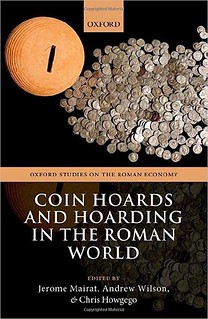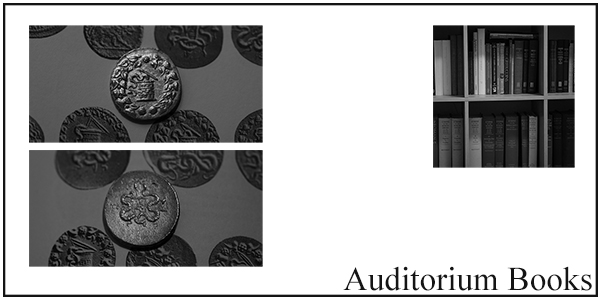
PREV ARTICLE
NEXT ARTICLE
FULL ISSUE
PREV FULL ISSUE
BOOK REVIEW: COIN HOARDS AND HOARDINGThe London Review of Books article also reviews a new compilation titled Coin Hoards and Hoarding in the Roman World . -Editor
Coin Hoards and Hoarding in the Roman World
Collections of scholarly articles are rarely coherent, but Coin Hoards and Hoarding in the Roman World contains plenty to enlighten the non-specialist and surprise the expert. Both emergency and savings hoards can tell us a lot about coins' longevity. There was, for instance, a five to tenfold increase in circulating silver between 200 and 50 bc and no mechanism for withdrawal save natural wear and tear. Because Republican denarii were so pure, even very worn examples were hoarded well into the second century ad. Particularly large issues from the last century bc – for instance, the massive issue of slightly underweight ‘legionary' denarii struck by Mark Antony in the run-up to his final war with Octavian – distorted the record for a hundred years or more. It's not surprising that the huge sums needed to pay for a standing army of several hundred thousand men should have a dominating impact on supply in the most heavily garrisoned provinces, but consideration of things like die-links can show us how likely coins from the same issue were to stay together over time. (Die-link studies, tedious but valuable, require meticulous comparison to match coins struck from the same dies, either on both sides or on one: reverse dies, which absorbed most of the force of the hammer, wore out faster than obverses.) There are some unexpected findings when we use hoards to trace how coins circulated. We know for a fact that the emperor Postumus, who ruled a separatist Gallic regime for a decade in the third century, was recognised in Spain because a great many inscriptions tell us so. But while coins bearing Postumus' image are common in Gallic and British hoards, they are hardly found in Spanish ones. This opens up new lines of inquiry about how, or whether, Postumus paid the legionaries garrisoned at León. Finally, evidence from accidental and emergency hoards in particular helps us understand people's actual economic lives rather than the normative lives implicit in government issues. The proliferation of unofficial coinage and the imitations of official coinage in various parts of the Roman Empire in the second, third and fourth centuries used to be interpreted as a sign of crisis (it was seen as an example of ‘siege money', or Notmünzen). Hoard evidence now shows the reason for the existence of such coins. Ancient states coined money to make payments, to assert prestige and identity, and occasionally, as in Ptolemaic Egypt, to create a closed economy, but never deliberately to enable a market economy among private individuals. This meant severe coin shortages were a frequent problem. As with the commercial tokens used in Victorian industrial cities or the boiled sweets used in lieu of small change in 1970s Italy, Roman imitative coinages weren't a sign of crisis but of a highly monetised market economy that demanded more specie than the state was able to provide. The hoard evidence from third-century Gaul and fourth-century Spain, now well studied, shows definitively that official and unofficial coinages were accepted at par and that there was no selection bias in either direction. This completely recentres the way we think about the later Roman economy. Coin Hoards and Hoarding shows how far from antiquarian stereotypes modern numismatics have come. More important, though, it's a reminder that cheap, ugly and plentiful coins have as much to teach us as rare and priceless specimens. Like Holt's amble, this book manages to evoke the pleasures of handling ancient coins and thinking about and with them. It also reacquaints us with a way of using money with which we are rapidly losing touch.
To read the complete article, see:
For more information, or to order, see:
Wayne Homren, Editor The Numismatic Bibliomania Society is a non-profit organization promoting numismatic literature. See our web site at coinbooks.org. To submit items for publication in The E-Sylum, write to the Editor at this address: whomren@gmail.com To subscribe go to: https://my.binhost.com/lists/listinfo/esylum All Rights Reserved. NBS Home Page Contact the NBS webmaster 
|

